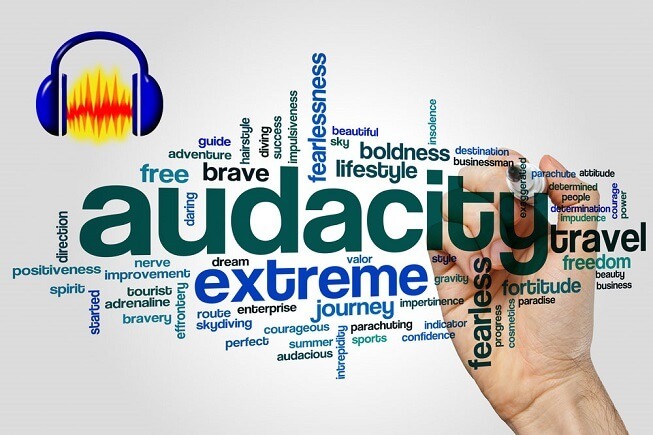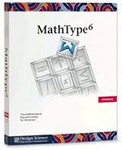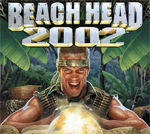Audacity is a free and open-source digital audio editor and recording application software, available for Windows, macOS, Linux, and other Unix-like operating systems. Audacity was started in the fall of 1999 by Dominic Mazzoni and Roger Dannenberg at Carnegie Mellon University and was released on May 28, 2000 as version 0.8.

As of October 24, 2020, it is the most popular download from FossHub, with over one hundred million downloads since March 2015. Previously, downloads were served from Google Code and SourceForge, with a combined total in excess of 120 million downloads. Audacity won the SourceForge 2007 and 2009 Community Choice Award for Best Project for Multimedia. Audacity is licensed under GPLv2 or any later version.
- Recording: Audacity can record live audio through a microphone or mixer, or digitize recordings from other media.
- Export / Import: Import, edit, and combine sound files. Export your recordings in many different file formats, including multiple files at once.
- Sound Quality: Supports 16-bit, 24-bit and 32-bit. Sample rates and formats are converted using high-quality resampling and dithering.
- Plugins: Support for LADSPA, LV2, Nyquist, VST and Audio Unit effect plug-ins. Nyquist effects can be easily modified in a text editor – or you can even write your own plug-in.
- Editing: Easy editing with Cut, Copy, Paste and Delete. Also unlimited sequential Undo (and Redo) in the session to go back any number of steps.
- Effects: Real-time preview of LADSPA, LV2, VST and Audio Unit (macOS) effects. Plug-in Manager handles plug-in installation and addition/removal of effects and generators from the menus.
- Accessibility: Tracks and selections can be fully manipulated using the keyboard. Large range of keyboard shortcuts.
- Analysis: Spectrogram view mode for visualizing and selecting frequencies. Plot Spectrum window for detailed frequency analysis.
The diagram illustrates the layers and modules in Audacity. Note the three important classes within wxWidgets, each of which has a reflection in Audacity. Higher-level abstractions result from related lower-level ones.
For example, the BlockFile system is a reflection of and is built on wxWidgets' wxFiles. Lower down in the diagram is a narrow strip for "Platform Specific Implementation Layers."
Both wxWidgets and PortAudio are OS abstraction layers. Both contain conditional code that chooses between different implementations depending on the target platform.


 LightShot 5.5.0.4
1,950
LightShot 5.5.0.4
1,950
 3uTools 2.56.012
2,097
3uTools 2.56.012
2,097
 Camtasia 9 9.0
1,343
Camtasia 9 9.0
1,343
 BlueStacks 5.0.0.7228
11,100
BlueStacks 5.0.0.7228
11,100
 NoxPlayer 7.0.0.9
1,693
NoxPlayer 7.0.0.9
1,693
 Evernote 10.9.10 2439
1,196
Evernote 10.9.10 2439
1,196
 Dropbox 117.4.378
1,480
Dropbox 117.4.378
1,480
 Download TeamViewer - Remote Control for PC, Android
1,309
Download TeamViewer - Remote Control for PC, Android
1,309
 Speccy Free Download
1,248
Speccy Free Download
1,248
 Revo Uninstaller Pro 4.4.2
1,184
Revo Uninstaller Pro 4.4.2
1,184
 Virtual DJ download free
1,283
Virtual DJ download free
1,283
 Ninite 2016
1,143
Ninite 2016
1,143
 OBS Studio Free download 32 bit, 64 bit
1,455
OBS Studio Free download 32 bit, 64 bit
1,455
 Foxit PDF Editor
1,022
Foxit PDF Editor
1,022
 GIMP 2.10.22
1,092
GIMP 2.10.22
1,092
 X-Proxy is a one-click IP address change software
2,127
X-Proxy is a one-click IP address change software
2,127
 Droid4X - Android emulator on your computer
2,350
Droid4X - Android emulator on your computer
2,350
 BlueStacks App Player Free Download Full Version
2,525
BlueStacks App Player Free Download Full Version
2,525
 LDPlayer 3.44 Free Download For PC
7,928
LDPlayer 3.44 Free Download For PC
7,928
 Dowload Free Speccy 1.31.732 For Window 10 Professional Review
2,536
Dowload Free Speccy 1.31.732 For Window 10 Professional Review
2,536
 Google Chrome Free...
166873
Google Chrome Free...
166873
 MathType 6.9a -...
79652
MathType 6.9a -...
79652
 Zalo for PC
29592
Zalo for PC
29592
 Beach Head 2002 -...
25769
Beach Head 2002 -...
25769
 iBackupBot - Free...
22625
iBackupBot - Free...
22625
 AnonymoX 2.0.2 -...
22213
AnonymoX 2.0.2 -...
22213
 Snipping Tool++...
20904
Snipping Tool++...
20904
 Age of Empires 1.0
17079
Age of Empires 1.0
17079
 Realtek AC97 Audio...
16540
Realtek AC97 Audio...
16540
 Citrio...
14577
Citrio...
14577